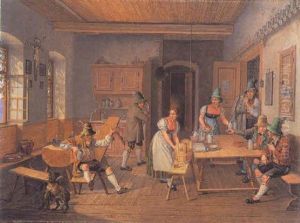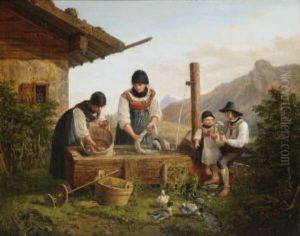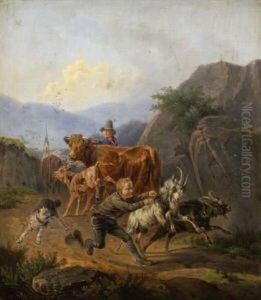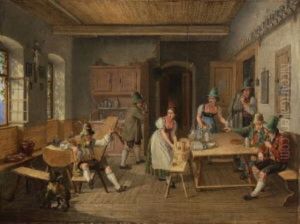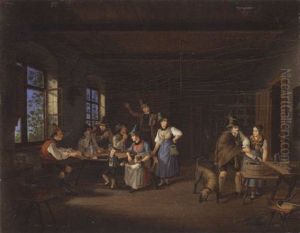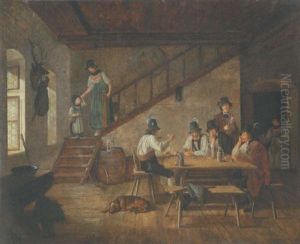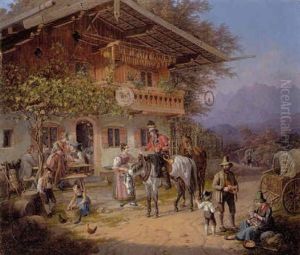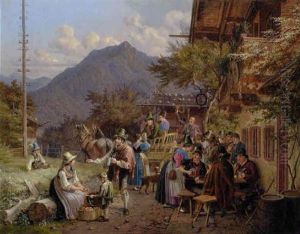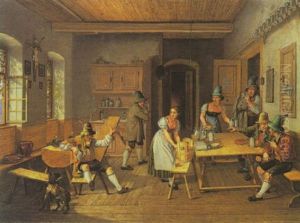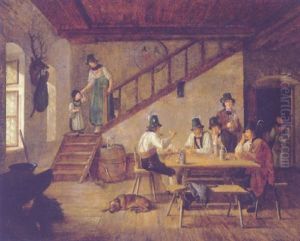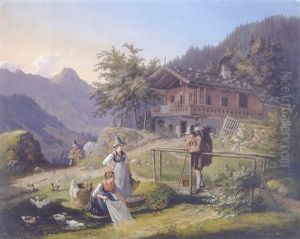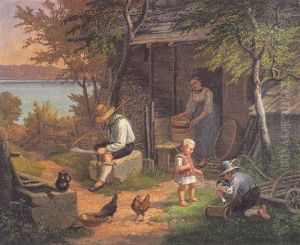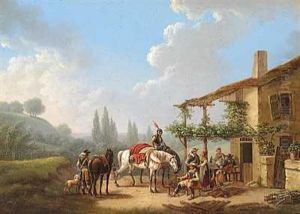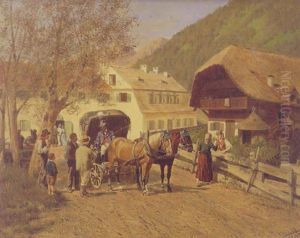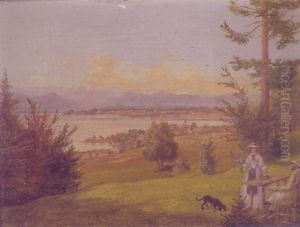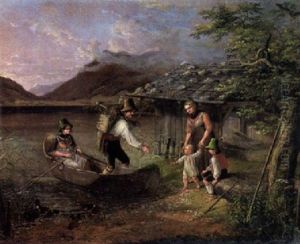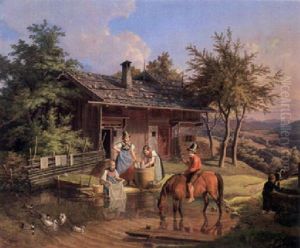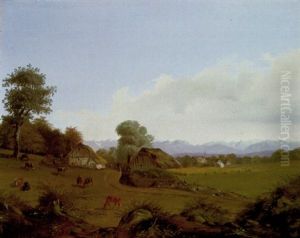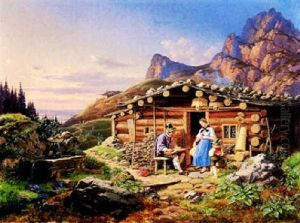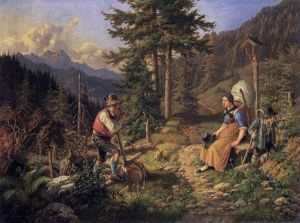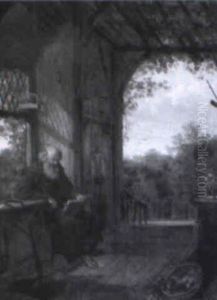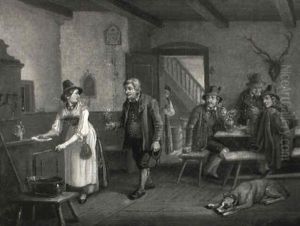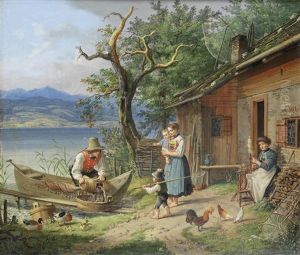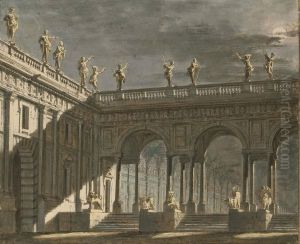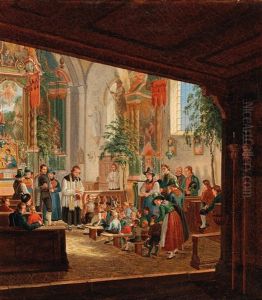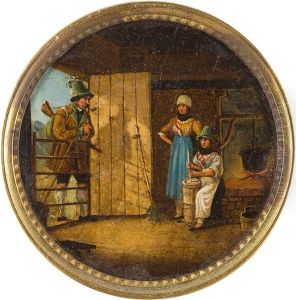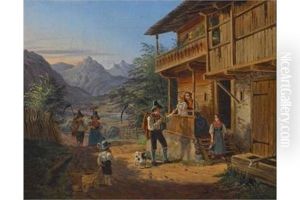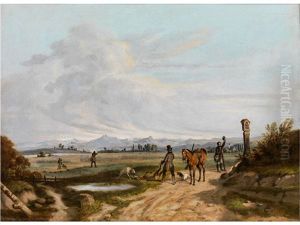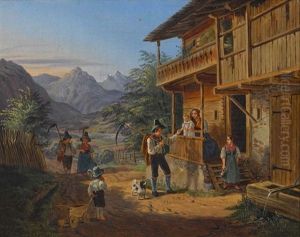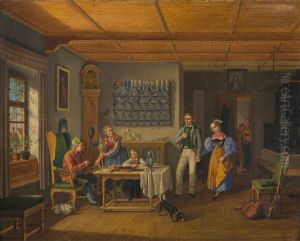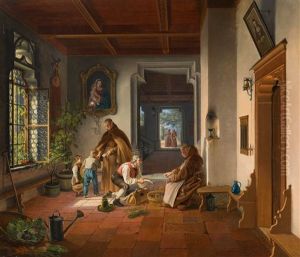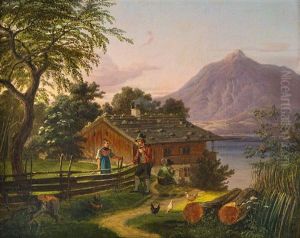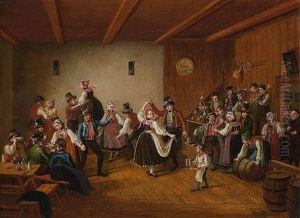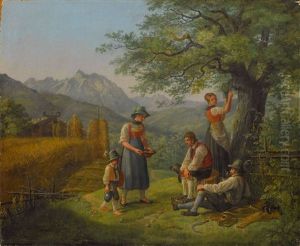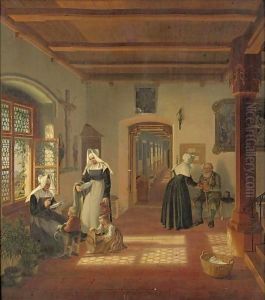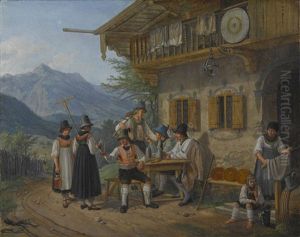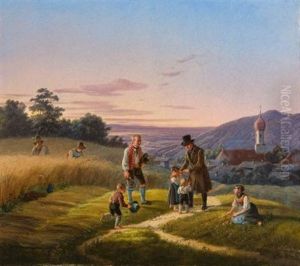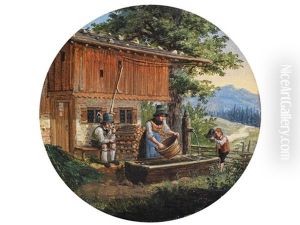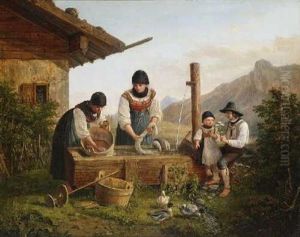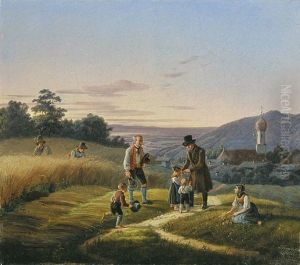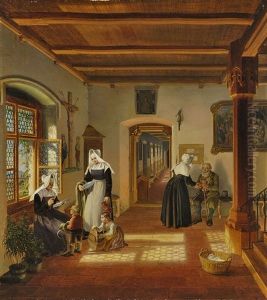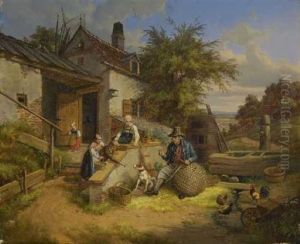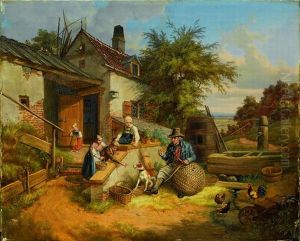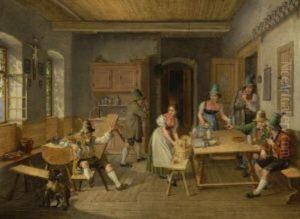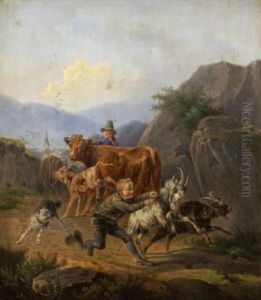Lorenzo Quaglio Paintings
Lorenzo Quaglio the Younger was a notable Italian painter, belonging to the Quaglio dynasty of artists that played a significant role in the German art world of the 19th century. Born on April 1, 1793, in Laino, Lombardy, Lorenzo was part of a family deeply entrenched in the arts; his father, Giuseppe Quaglio, was a prominent stage designer and painter, and his siblings, as well as his relatives, were engaged in various artistic pursuits. This familial environment provided Lorenzo with a fertile ground for developing his artistic skills from a young age.
Lorenzo Quaglio began his artistic education under the guidance of his father and his brother, Angelo Quaglio, who was also a distinguished painter and stage designer. In his early years, Lorenzo was influenced by the family's involvement in theater and set design, which is reflected in the architectural precision and detailed interior scenes that became characteristic of his later works. The Quaglio family moved to Munich in 1808, where Lorenzo would spend a significant portion of his life and where his career would flourish.
Throughout his career, Lorenzo Quaglio was predominantly known for his landscape and genre paintings, which often depicted German and Italian scenes with a romantic sensibility. His paintings were marked by their attention to detail, vibrant color palette, and the use of light to create atmospheric effects. Quaglio's work was well-received, and he was commissioned to paint various scenes of historical and cultural significance. He also worked on frescoes in several public buildings and churches.
During the 1820s, Quaglio traveled extensively throughout Italy, where he was inspired by the country's rich cultural heritage and picturesque landscapes. These travels further influenced his artistic style and the subject matter of his paintings. He became noted for his depictions of everyday life, capturing the essence of the locales and the people he encountered. Despite his Italian roots, Lorenzo Quaglio is often associated with the German Romantic movement due to his long residency and artistic contributions in Germany.
Lorenzo Quaglio continued to paint and contribute to the arts until his death on December 15, 1869, in Munich. His legacy is preserved through his works, which are housed in various museums and collections, and through the lasting influence he had on the German Romantic school of painting. The Quaglio family's artistic tradition was upheld by subsequent generations, cementing their place in the history of European art.
